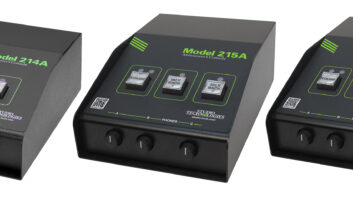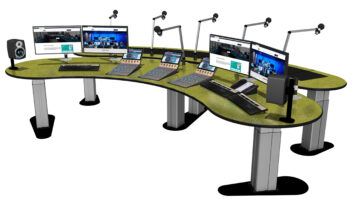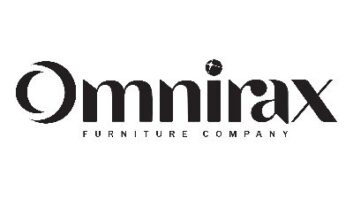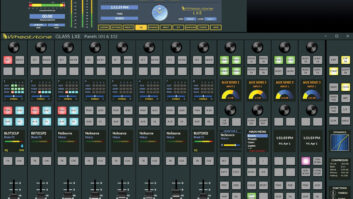If you’re a commercial radio station or a college campus and you’ve never thought about ISDN, I have two words for you: public radio.
The generic term for content creators National Public Radio, American Public Media and Public Radio International (among many others), and their affiliate broadcast stations, “public radio” is an award-winning source of news for over 20 million listeners every week.
You might be wondering: “So what? Both NPR and ISDN have been around for decades, why are you talking about them now?”
ISDN hasn’t changed, but public radio has. There are a lot more listeners, a lot more prestige and a lot more producers. These producers need studios to book their guests in, and you can help fill that need.
(click thumbnail)
If you’re a commercial radio station with a lightly used extra studio, public radio has the cash to rent that studio to interview a local guest in.
And if you’re a college or university, or a college radio station, you can make your professors available to be interviewed by public radio, thus bringing you national prestige and publicity … and the respect of your college.
Earning extra cash, bringing extra prestige, what’s not to love?
What exactly is ‘the deal’?
Public radio, in general, places a premium on audio quality; ISDN helps achieve that.
In this case, ISDN refers to dedicated hardware that uses special telephone lines and high-speed algorithms to deliver CD-quality sound with almost no delay. In short, even though a guest might be in a studio 1,000 miles away, with ISDN they sound like they’re sitting in the same room as the host.
When an average public radio producer wants to interview a guest, that producer is looking — often frantically — for a readily available studio, convenient for the guest, that has the following:

- A quiet/soundproof studio or room with a studio-quality microphone.
- A location convenient for guests.
- A means of doing a backup recording.
- An ISDN codec compatible with the MPEG Layer 2 algorithm at 128 kbps (a.k.a. “L2 mono/128”).
What makes a good “broadcast studio?” Dense, solid walls, internal acoustic treatment, soundproof doors, baffled HVAC vents and a method for allowing a trained technician to handle the techie stuff, so the guest doesn’t have to.
Don’t have all that? You can still create a “studio” of sufficient quality with much less effort and cost. A regular room that’s naturally quiet — with thick concrete walls, no windows, a solid-core door and egg-crate foam on the walls — can do the trick. Or a “pre-fab” solution such as a WhisperRoom booth can work well, too.
If you’re a college radio station, try talking to the marketing or public relations office, which may be willing to pay for your ISDN in exchange for access to your production studio. The rest of the time you can rent your ISDN to bring in some extra bucks to your station, or use it for remote broadcasts like concerts and sports.
An installation note: strictly speaking, ISDN is a special data telephone line from your local phone company, or the campus telecommunications department. It’s a somewhat esoteric technology, and telcos are slowly retiring it in favor of IP-based technologies.
It may take several calls and four to eight weeks to see if ISDN is available and get it installed. To cover your bases, try to get a codec that can handle IP/Internet audio connections as well as ISDN.
If you can’t find one, try to find out if and/or when your telco plans to “retire” ISDN in your area. If it’s more than five years or so, go for ISDN now and plan to upgrade to IP codecs later.
For help with your installation, many major ISDN hardware providers have excellent “ordering guides” in the support sections of their Web sites. Three I know are www.tieline.com, www.comrex.com and www.telos-systems.com.
Now what?
Okay, you’ve got this ISDN but no one to call.
To fix that, a little marketing and some patience is required.
First, set up a Web site page just for the studio. Include lots of details: directions with maps, parking information, equipment lists, availability guidelines and your rates/charges. Time is critical in booking; so include enough contact information that a producer can reach a booking agent quickly and easily.
Next, make sure your studio is listed on the appropriate Web sites. When I’m looking to rent a studio, the two I use the most are “Wisconsin Public Radio’s ISDN Directory” (www.wpr.org/isdn) and the “DigiFon Digital Dialup List” (www.digifon.com/aboutddl.html.)
If you’re a college campus, make sure every department head knows about your studio and that their professors can use it to be interviewed by so-called “prestigious” public radio. Make sure the campus public relations/marketing office knows, too.
Don’t forget to just call up NPR, PRI and APM, and also any public radio stations nearby. Ask to speak with whoever handles their studio booking on their end, and ask them to keep you in mind if they ever get overbooked. It’s not uncommon for other studios to get requests for studio rentals they just can’t deliver on, and they’ll be happy to send you the business.
Even after all this effort — be patient. Most people will stumble across you through Internet searches and through word-of-mouth, but over time you’ll build up a reputation.
Finally, how much should you charge for your ISDN? There’s a lot of variation, but to get you started: rates typically run from $40 per hour to $250 per hour, with a one-hour minimum. The most common is $100/hr but that usually includes an engineer to run things for the guest. If you’re a college station, offer free rentals to campus professors; it helps build good relations with your parent college.
Some studios charge extra for providing a backup recording or extra to cover the per-minute ISDN line fees. I personally prefer to charge a blanket rate that might be a little higher; it’s simpler for everyone.
Conclusions
Getting ISDN — or if you have it, getting the word out about it — is a great way to help turn an empty room into revenue generator; your business manager will love you.
Plus, it can open up a new avenue of free publicity on a national platform; your college PR office will love you. And you’ll help some poor public radio producer, like I used to be, have it just a little easier. Thanks!












